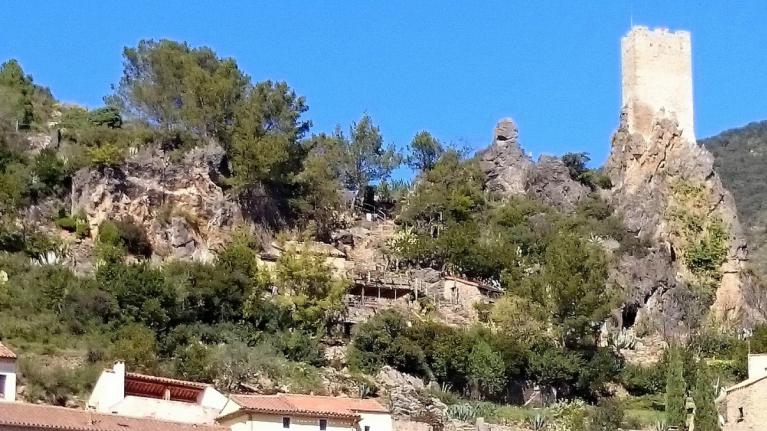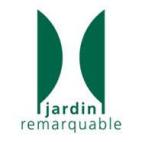Discover an exotic & Mediterranean paradise in the heart of the hérault
Roquebrun, known as the
“Nice de l’Herault”
Sheltered from the north winds by ‘le massif de l’Esquirol, Roquebrun, known as the “Nice de l’Herault”, benefits from a microclimate unique in the region. This exceptional mildness explains the creation of the exotic and Mediterranean garden in Roquebrun.
In 1986, the association CADE (Collectif Agricole pour le développement et l’environement), in collaboration with the municipality and spurred on by enthusiasts created Le Jardin Meditérraneén at the foot of the medieval tower.
The garden extends over centuries-old south facing terraces, bounded to the west by dolomitic ‘pipe organs’. These geological formations capture the heat of the day which is then released during the night. This offers ideal conditions for the blooming of a flora adapted to arid and dry climates.
With the introduction of more than 4000 plants (approx. 400 species) the garden has assembled one of the most important collections of exotic and Mediterranean vegetation.
It includes 5 botanical areas:
1. Exotic Plants: In addition to the spectacular agaves, aloes and palm trees, opuntias, cereus and echinocactus flourish. These cactaceae commonly called cactus originate from the New World and their cousins the crassulaceae ° sedums, orpines, jovibarbas...are from around the Mediterranean and Africa. They have a surprising capacity for regeneration: a cut leaf can develop into a new plant!
° plants with stems and leaves full of water
2. Mediterranean plants: Typical Mediterranean plants of our region, strawberry and juniper trees, buplèvre, stunted holm oak ...intermingle with the collection of mimosas: Originally from Australia, mimosa appeared in the south of France during the mid 19th century presumably introduced to adorn the lavish residences of the crowned heads.
Local climatic conditions are so favourable to its growth and blossom that this must not be missed!

3. Orchard is integrated into the terraces including examples of Mediterranean fruit varieties such as olive, almond, pomegranate, apricot and citrus trees....fruit trees cherished by our ancestors.
4. Garrigue plants : Pastoralism has worked to create the garrigue that we know today. For centuries the vegetation has adapted to survive the grazing of sheep. Euphorbia and asphodels are toxic, rue and rosemary are indigestible, and the genet scorpion (broom) has thorns! These plants overran the pastures, man responded by using fire to clean some areas. This practice encouraged plants, such as cysts, that need extreme heat or fire for their development.
5. Pine forest: The terraces supported by dry stone walls are witness to past exploitation when vineyards and olive trees coloured the slopes of this hill. Since the sixties, pins d’Alpes and pins noirs have replaced these and colonised Roquebrun’s surroundings. Today, this sector is the adopted home of the garden’s goats.
TARIFS INDIVIDUELS
Visite libre adulte : 5,50 €
Visite libre enfant : 3 €
(de 6 ans à 16 ans).
TARIFS GROUPES
Visite libre : 4,50 €
(à partir de 15 personnes).
Visite guidée : 6,50 €
(à partir de 15 personnes sur réservation). Conditions Générales.
Visite guidée pour scolaires
Ecole maternelle et primaire : 3 €
Collège et lycée : 4,50 €
Cycle supérieur : 5,50 €)
Conditions Générales.
Discover Roquebrun's Mediterranean garden!
A wonderful change of scenery guaranteed!

Copyright JARDIN MEDITERRANEEN DE ROQUEBRUN
C.A.D.E. Rue de la Tour, 34460 Roquebrun - Tous droits réservés - Mentions Légales - Contact
Ce site utilise des cookies à des fins statistiques - Pour plus d'informations, cliquez ICI.